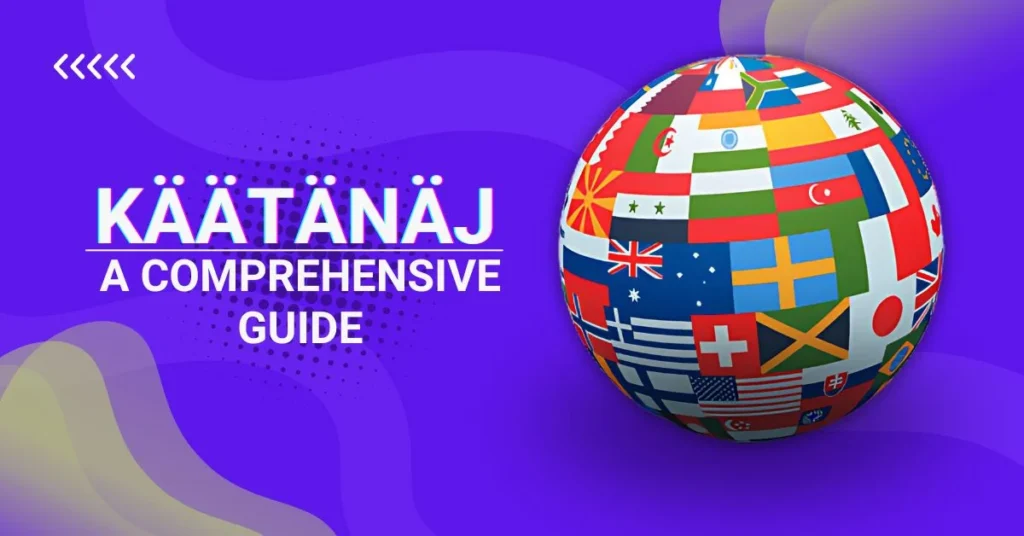What Are the Origins of the Kaatanaj Language?

The Kaatanaj language is a fascinating and unique language with a rich history that has intrigued scholars and language enthusiasts alike. But what are the origins of the Kaatanaj language? This article will explore the roots, development, and influences that have shaped Kaatanaj into the language it is today. By understanding its history, we can gain insight into the culture and people who have spoken Kaatanaj for centuries.
A Brief Introduction to Kaatanaj
Before diving into the origins, it’s essential to know what Kaatanaj is. The Kaatanaj language is spoken by a small community in a remote region, often passed down through generations. It is known for its distinct sounds, complex grammar, and unique vocabulary, which set it apart from other languages in the region. Although not widely spoken, Kaatanaj holds cultural significance for its speakers, serving as a key component of their identity and heritage.
The Early Roots of Kaatanaj
The question “What are the origins of the Kaatanaj language?” can be traced back to ancient times. Kaatanaj likely developed from a combination of ancient languages that were spoken by the early inhabitants of the region. These early languages were heavily influenced by the geography, climate, and natural resources of the area, which shaped the vocabulary and structure of Kaatanaj.
The people who spoke these ancient languages were primarily hunters, gatherers, and later, farmers. As they settled in various parts of the region, their languages began to evolve, adapting to their new environments. Over time, these languages merged, giving birth to what we now know as the Kaatanaj language.
Influence of Neighboring Languages
Another critical factor in the origins of the Kaatanaj language is the influence of neighboring languages. As the early Kaatanaj speakers interacted with neighboring tribes and communities, their language began to borrow words, phrases, and grammatical structures from these other languages. This process, known as language borrowing, is common in the development of many languages around the world.
For example, the Kaatanaj language may have borrowed words related to trade, agriculture, and religion from neighboring languages. This borrowing helped enrich the Kaatanaj vocabulary and allowed the language to adapt to changing social and cultural contexts.
The Role of Oral Tradition
Oral tradition played a significant role in preserving and transmitting the Kaatanaj language from one generation to the next. In the early days, there was no written form of Kaatanaj, so the language was passed down through stories, songs, and other oral practices. This tradition ensured that the language remained alive and vibrant, even as the world around it changed.
The oral tradition also helped to preserve the cultural heritage of the Kaatanaj-speaking community. Stories about their ancestors, myths, and legends were all told in Kaatanaj, which helped to reinforce the language’s importance and keep it at the center of the community’s cultural life.
The Development of a Written Form
As time went on, the Kaatanaj language began to develop a written form. This development was crucial in preserving the language, especially as the community started to come into contact with other cultures and languages. The creation of a writing system allowed for the recording of important texts, such as religious scriptures, legal documents, and historical records, in Kaatanaj.
The written form of Kaatanaj also helped to standardize the language, making it easier for people to learn and use consistently. This standardization was essential in maintaining the integrity of the language, especially as it faced external pressures from more dominant languages in the region.
The Impact of Colonization
One of the most significant events in the history of the Kaatanaj language was the arrival of colonizers. The colonization of the region brought about dramatic changes in the social, political, and economic landscape, which had a profound impact on the Kaatanaj language.
The colonizers introduced their language, which often became the dominant language in the region. This shift posed a threat to the survival of Kaatanaj, as more and more people began to adopt the colonizers’ language for trade, education, and governance.
However, despite these challenges, the Kaatanaj language managed to survive. The community continued to use Kaatanaj in their daily lives, particularly in the home and in religious and cultural practices. This resilience ensured that the language remained a vital part of the community’s identity.
Modern Influences and Changes
In modern times, the Kaatanaj language has continued to evolve and adapt to the changing world. The introduction of new technologies, such as the internet and mobile phones, has brought about new words and phrases in Kaatanaj. Additionally, the influence of global cultures has introduced new concepts and ideas that have been incorporated into the language.
Despite these changes, the core of the Kaatanaj language has remained intact. The community continues to take pride in their language, ensuring that it is passed down to future generations. Efforts are also being made to preserve and promote the language through education and cultural programs.
The Cultural Significance of Kaatanaj
The Kaatanaj language is not just a means of communication; it is a vital part of the community’s cultural heritage. The language is deeply intertwined with the community’s traditions, customs, and beliefs. Many of the community’s rituals, ceremonies, and festivals are conducted in Kaatanaj, reinforcing the language’s importance.
Furthermore, the Kaatanaj language is a source of pride for its speakers. It serves as a symbol of their identity and a link to their ancestors. By speaking Kaatanaj, the community maintains a connection to their past while also asserting their cultural distinctiveness in the present.
The Future of the Kaatanaj Language
The future of the Kaatanaj language is uncertain, as it faces numerous challenges in the modern world. The dominance of global languages, such as English and Spanish, poses a significant threat to the survival of Kaatanaj. Additionally, younger generations may be less inclined to learn and use the language, particularly if they see it as less relevant in a globalized world.
However, there is hope for the preservation of the Kaatanaj language. Efforts are being made to revitalize the language through education, cultural programs, and the documentation of the language. By teaching Kaatanaj to young people and encouraging its use in various aspects of life, the community can help ensure that the language continues to thrive.
Conclusion
In conclusion, the origins of the Kaatanaj language are deeply rooted in the history, culture, and geography of the region. From its early beginnings as a blend of ancient languages to its survival through colonization and modern influences, Kaatanaj has proven to be a resilient and vital language.
The Kaatanaj language is more than just a means of communication; it is a symbol of cultural identity and heritage. By understanding and appreciating the origins of the Kaatanaj language, we can gain a deeper insight into the people who speak it and the rich cultural traditions that they continue to uphold.
The future of Kaatanaj may be uncertain, but with continued efforts to preserve and promote the language, there is hope that it will continue to be spoken for generations to come. The Kaatanaj language is a testament to the resilience of a community and the enduring power of language as a vital part of human culture.








